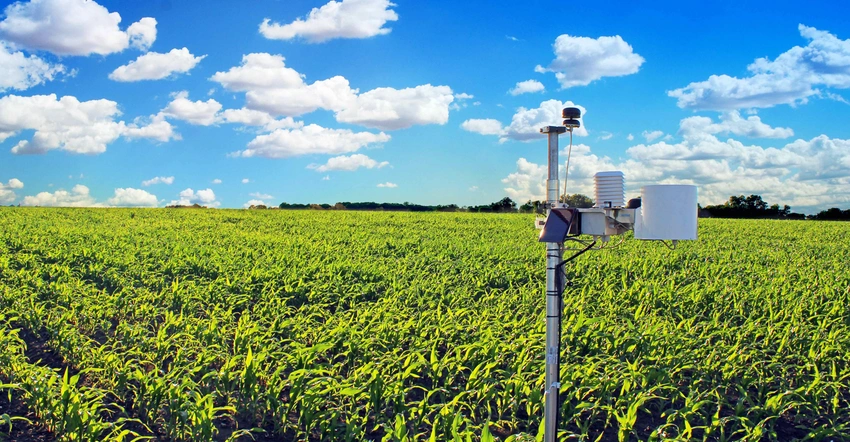10 Ways Digital Weather Stations Enhance Agricultural Practices
In the age-old dance between nature and agriculture, technology has emerged as a silent yet powerful partner, reshaping the way farmers interact with their environment. Among the array of technological innovations, digital weather stations stand out as beacons of precision and foresight, fundamentally altering the landscape of agricultural practices. These sophisticated tools provide farmers with real-time data on crucial atmospheric conditions, empowering them to make informed decisions and navigate the complexities of modern farming with unparalleled accuracy. In this comprehensive exploration, we delve into the multifaceted ways in which digital weather stations are revolutionizing agricultural practices, unlocking new frontiers of productivity, sustainability, and resilience.
Table of Contents
Enhancing Agricultural Practices: 10 Benefits of Digital Weather Stations

Precision Farming:
At the heart of modern agriculture lies the pursuit of precision, and digital weather stations serve as its guiding compass. By monitoring a plethora of meteorological variables including temperature, humidity, rainfall, and wind speed, these stations offer farmers localized weather forecasts tailored to the unique microclimates of their fields. Armed with this granular data, farmers can optimize irrigation schedules, fine-tune planting times, and tailor crop management practices with surgical precision. The result is a dramatic reduction in resource wastage and an exponential increase in crop yields, setting the stage for a new era of hyper-efficient farming.
Disease Management:
Crop diseases pose a constant threat to agricultural productivity, but digital weather stations are turning the tide in favor of farmers. By closely monitoring environmental conditions conducive to disease outbreaks, such as humidity levels and temperature fluctuations, these stations provide early warning signals, enabling farmers to deploy targeted pest control measures and disease-resistant crop varieties. This proactive approach not only minimizes crop losses but also reduces reliance on chemical interventions, paving the way for a more sustainable and eco-friendly approach to pest management.
Water Management:
In a world grappling with water scarcity, efficient water management has become a non-negotiable imperative for farmers. Digital weather stations play a pivotal role in this regard, offering real-time data on soil moisture levels, evapotranspiration rates, and precipitation forecasts. Armed with this information, farmers can fine-tune their irrigation schedules, optimize water usage, and minimize wastage. The result is not just the conservation of a precious resource but also significant cost savings and environmental stewardship.
Crop Planning and Diversification:
Successful farming hinges on strategic crop planning and diversification, and digital weather stations are invaluable allies in this endeavor. By analyzing historical weather data and long-term climate trends, farmers can identify optimal crop varieties and planting times tailored to their specific agro-climatic conditions. This data-driven approach not only minimizes risks associated with climate variability but also fosters agricultural diversification, enhancing farm resilience and profitability in the face of changing environmental dynamics.

Pest Management:
Pests are formidable adversaries in the battle for bountiful harvests, but digital weather stations are arming farmers with preemptive strategies to outsmart them. By monitoring temperature thresholds and insect life cycles, these stations provide early warnings of impending pest outbreaks, enabling farmers to deploy integrated pest management (IPM) practices and biocontrol strategies with surgical precision. The result is a reduction in chemical pesticide usage, preservation of natural predators, and a healthier ecosystem within agricultural landscapes.
Frost Protection:
Frost events can spell disaster for sensitive crops, but digital weather stations offer a shield of protection against nature’s icy grip. By monitoring temperature trends and dew point fluctuations, farmers can anticipate frost occurrences and implement protective measures such as overhead irrigation and wind machines. This proactive approach not only minimizes crop losses but also preserves yield potential and sustains farm profitability, particularly in regions prone to late spring frosts.
Decision Support Systems:
In the labyrinthine world of modern agriculture, informed decision-making is the linchpin of success, and digital weather stations form the backbone of decision support systems (DSS). By providing real-time weather data and predictive analytics, these stations assist farmers in optimizing agronomic practices across the entire farming lifecycle. From crop selection and planting decisions to harvest timing and post-harvest management, DSS powered by digital weather stations enables farmers to adapt swiftly to changing environmental conditions, maximizing productivity and profitability.
Climate Resilience:
Climate change looms large as a formidable challenge for agriculture, but digital weather stations are empowering farmers to build resilience in the face of uncertainty. Farmers can anticipate shifting weather patterns and adjust farming practices by monitoring climate indicators and trends. Whether through diversifying crops, adopting climate-smart technologies, or implementing soil conservation measures, digital weather stations facilitate proactive adaptation to climate change, ensuring long-term farm viability and food security.

Data-Driven Insights:
In the era of big data, information is power, and digital weather stations are founts of invaluable insights for farmers. By analyzing vast troves of historical weather data and agronomic metrics, farmers can identify correlations, trends, and anomalies to optimize production practices continually. Whether through predictive modeling, machine learning algorithms, or cloud-based analytics platforms, these insights empower farmers to unlock the full potential of their land, resources, and crops, driving innovation and sustainability in agriculture.
Economic Benefits:
Beyond their intrinsic value in enhancing productivity and sustainability, digital weather stations yield substantial economic benefits for farmers and rural communities. By minimizing input costs, maximizing crop yields, and reducing production risks, these technologies improve farm profitability and resilience, bolstering rural livelihoods and economic development. Moreover, digital weather stations contribute to broader socio-economic progress by fostering innovation and efficiency in agriculture, ensuring a prosperous and sustainable future for farming communities worldwide.
Conclusion:
In the ever-evolving saga of agriculture, digital weather stations emerge as indispensable allies, guiding farmers through the labyrinth of environmental complexities with unwavering precision and foresight. From precision farming and pest management to climate adaptation and economic empowerment, these advanced technologies hold the key to unlocking new frontiers of productivity, sustainability, and resilience on the farm. By harnessing the power of real-time weather data and predictive analytics, farmers can confidently navigate modern agriculture’s challenges, ensuring a prosperous, sustainable, and resilient future for generations to come.

